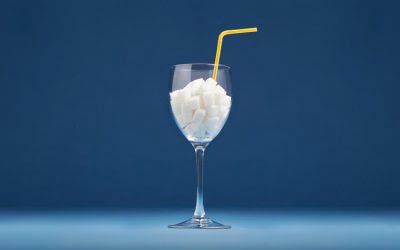Alcohol-related peripheral neuropathy: a systematic review and meta-analysis PMC
Alcohol administration protocols that induce nervous tissue damage vary from a four-day acute intoxication (Crews et al., 2004) to 40 weeks of chronic consumption (Dlugos, 2006). In this study, we utilized a protocol with free access and choice between a bottle containing alcohol solution and another containing water. The free access to the alcohol bottle was on Mondays, Wednesdays, and Fridays.
- It also can affect other areas and body functions including digestion and urination.
- Patients who have ALN might present such symptoms as cramps, impaired movement of the limbs, muscle atrophy, muscle weakness, spasms, or contractions, loss of sensation, or feeling of tingling.
- By Sarah Jividen, RN
Sarah Jividen, RN, BSN, is a freelance healthcare journalist and content marketing writer at Health Writing Solutions, LLC. - The demyelination is explained as the result of a slowing down (decceleration) of axoplasmic flow and a degradation of the quality of biological properties of axonal enzymes and proteins.
PCT seems to be valuable due to the correlation between prolongation of pupil oscillation and exacerbations of cardiovascular symptoms which presents the colinear involvement of parasympathetic division of ANS. To better understand the neurological effects of alcohol, it helps to explore some of the more well-known pathologies, disorders, and diseases. The following sections provide a brief overview of several neurologic conditions related to alcohol consumption. According to a 2017 review, muscle myopathy is common in alcohol use disorder. In addition, about 40 to 60 percent of people who experience chronic alcohol misuse also experience alcohol-related myopathy.
Alcohol Use Disorders and Neurological Illnesses
Mayhew (1988) was the first to use the fractionation technique (Gundersen, 1986) to estimate the total number of myelinated axons in the tibial nerve of rats. It is a reliable method to assess alcohol induced tissue damage (Gundersen, 1986). These analyzes can contribute to a better understanding of the AN pathogenesis (Chopra and Twari, 2012). Oxidative stress is known to play a very important role in experimental animal models of neuropathic pain. Lee et al. [36] suggested that reactive oxygen species are importantly involved in the development and maintenance of capsaicin-induced pain, particularly in the process of central sensitization in the spinal cord in rats. Naik et al. [38] suggested the involvement of oxidative stress in experimentally induced chronic constriction injury of the sciatic nerve model in rats.
- The best way to avoid the issue is to limit alcoholic consumption to 2 or fewer drinks per day for males and 1 or fewer for females.
- Women are more likely to develop alcohol polyneuropathy and suffer from a more rapid onset and greater severity.
- ALN further manifests as weakness and atrophy of muscles due to the damage of greater motor fibers and impaired neuromuscular transmission.
- Has been contributing to medical fields including mental health and addiction since she retired from medicine; with over 19 years of practicing clinical experience.
- Treatment options include steps to quit alcohol use and managing symptoms of the disease.
Pain seems to be consistent through the literature to be one of the most common complaints and can be the first clinical indication of the disease. Keeping this disease process high on the differential with the right history is essential. Progression of the disease leads to symmetrical ascending motor and sensory deficits.
Results
Translocation of NFkβ to the nucleus has been reported to result in activation of the endogenous proteolytic enzyme system caspases [69]. Joseph & Levine [71] suggested that activity in signaling pathways that ultimately lead to apoptosis plays a critical role in the generation of neuropathic pain, before death of sensory neurones becomes apparent. Activator and effector caspases, defining components of programmed cell death signalling pathways, also contribute to pain-related behaviour in animals with small fibre peripheral neuropathies. The death receptor ligand, tumour necrosis factor α, and its downstream second messenger, ceramide, also produce pain-related behaviour via this mechanism. This suggests that these pathways are potential targets for novel pharmacological agents for the treatment of inflammatory as well as neuropathic pain [71]. Alcoholic neuropathy is a condition in which the nerves become damaged as a result of years of heavy alcohol consumption.
Malnutrition has been implicated in the pathology of alcohol-related neuropathy by several authors. The majority of studies which investigate the relationship between malnutrition and neuropathy focus on thiamine deficiency as an aetiological factor, drawing upon existing knowledge of Beri Beri. A smaller number of publications do attribute thiamine deficiency, but generally speaking these studies were older or of lower quality evidence [4, 6, 30, 58, 76, 77]. Of all the deleterious effects of excessive alcohol consumption, neuropathy is the most common.
Progressed disease
Ethanol impedes the transportation, processing, and absorption of essential nutrients, resulting in a deficiency which can harm health and preventing nerves from functioning correctly. It includes more than 30 independent observation parameters, which are grouped into domains. The domains are neurological, autonomic, and behavioral; each one with its measurement and evaluation parameters (Boucard et al., 2010). This test is commonly used in studies of neuropathic disorders, and it is easily replicable.
Worth mentioning, bottles were tested for leakage, an issue that could hinder precise measurement of the solutions. The leakage was negligible, hence, not affecting the calculations of consumption. Also, alcohol neuropathy levels of alcohol in the blood higher than 60 mg/dL confirmed the consistency of this protocol and were compatible with other studies (Bell et al., 2006, Simms et al., 2008a, Simms et al., 2008b).
Malnutrition and Micronutrients Deficiency
However, data from literature indicate additional autonomic alterations in long-term chronic users (Milovanovic et al., 2009). One of the tests was 24 h Holter monitoring, which evaluated short-term heart rate variability, showing a significant difference and an incidence of severe autonomic dysfunction in 56% of the patients (chronic alcohol users), (Milovanovic et al., 2009). These studies correlated the autonomic alterations with the total alcohol dose and the number of doses multiplied by the consumption period (El-Mas and Abdel-Rahman, 2013; de Zambotti et al., 2015). In our study, it was not possible to detect all autonomic alterations because the consumption period was not long enough to induce these types of alterations, which should occur after a consumption of alcohol greater than those observed in our animals. The prevalence of impairments in ANS in alcohol-dependent patients varies from 20 to 99% [160].

Thus, it is clear that all the above pathways are potential targets for novel pharmacological agents for the treatment of alcoholic neuropathy. It is important to supplement the diet with vitamins, including thiamine and folic acid. For the most part this review consists of non-interventional studies for which generally accepted https://ecosoberhouse.com/ tools to evaluate risk of bias are not available. However, bias was still considered when evaluating studies as these study types were subject to the following limitations; population selection bias, loss of patients at follow ups, bias through misclassification or misdiagnosis, patient recall and observer bias.
Alcohol depletes the pool of liver proteins
There are several tests that can be done to diagnose alcohol neuropathy and usually, more than one is necessary. Another effect of this disease is uncomfortable and painful sensations such as hypersensitivity or pain to touch. Some people might feel constant pain in the feet or hands which feels like throbbing, burning or sharp needles and pins.


